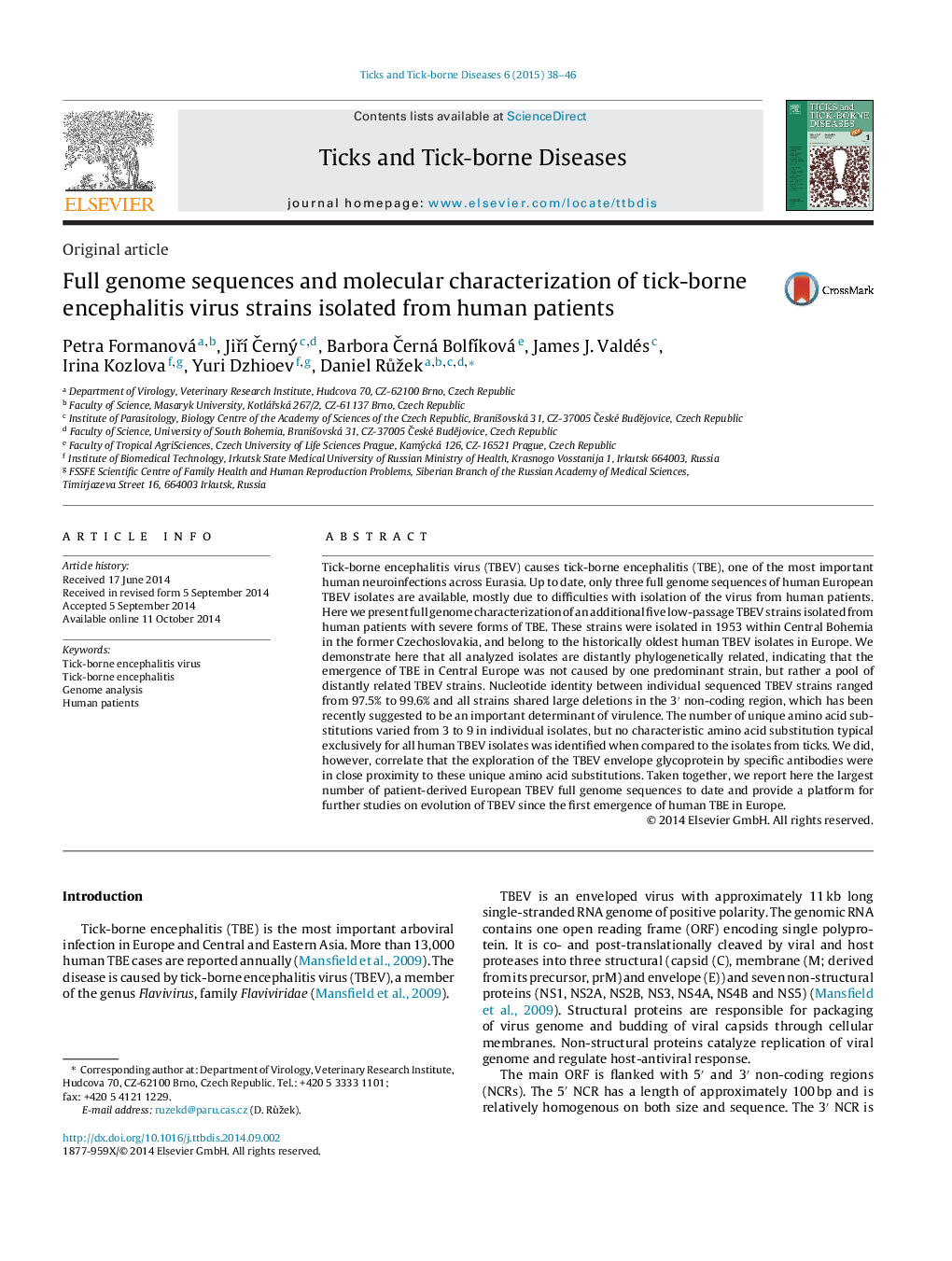| Article ID | Journal | Published Year | Pages | File Type |
|---|---|---|---|---|
| 2474024 | Ticks and Tick-borne Diseases | 2015 | 9 Pages |
Tick-borne encephalitis virus (TBEV) causes tick-borne encephalitis (TBE), one of the most important human neuroinfections across Eurasia. Up to date, only three full genome sequences of human European TBEV isolates are available, mostly due to difficulties with isolation of the virus from human patients. Here we present full genome characterization of an additional five low-passage TBEV strains isolated from human patients with severe forms of TBE. These strains were isolated in 1953 within Central Bohemia in the former Czechoslovakia, and belong to the historically oldest human TBEV isolates in Europe. We demonstrate here that all analyzed isolates are distantly phylogenetically related, indicating that the emergence of TBE in Central Europe was not caused by one predominant strain, but rather a pool of distantly related TBEV strains. Nucleotide identity between individual sequenced TBEV strains ranged from 97.5% to 99.6% and all strains shared large deletions in the 3′ non-coding region, which has been recently suggested to be an important determinant of virulence. The number of unique amino acid substitutions varied from 3 to 9 in individual isolates, but no characteristic amino acid substitution typical exclusively for all human TBEV isolates was identified when compared to the isolates from ticks. We did, however, correlate that the exploration of the TBEV envelope glycoprotein by specific antibodies were in close proximity to these unique amino acid substitutions. Taken together, we report here the largest number of patient-derived European TBEV full genome sequences to date and provide a platform for further studies on evolution of TBEV since the first emergence of human TBE in Europe.
